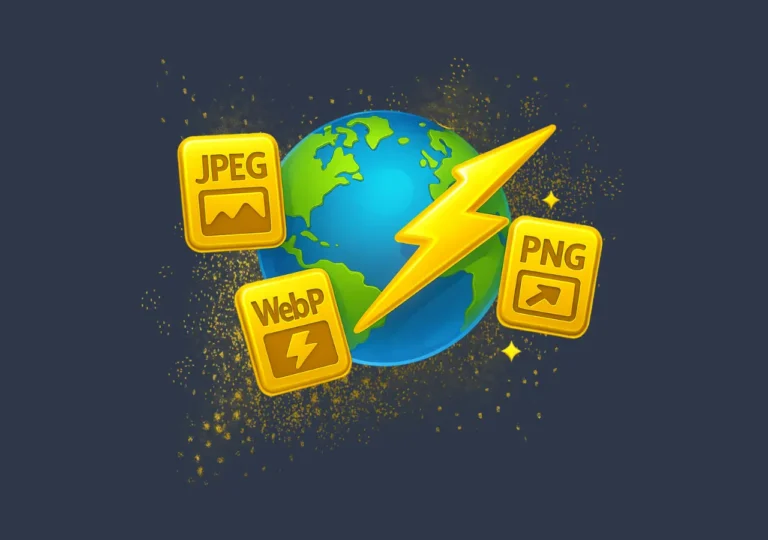
Why Monetization Still Matters (and how things actually changed) 💡
Yep — blogging is not dead. Far from it. The landscape shifted, sure, but the core truth remains: people still pay for useful, trustworthy content. What changed is how they pay, and what counts as valuable. Sounds interesting, right?
Small indie publishers and niche creators now use a mix of recurring revenue, microtransactions, and integrated tools to build stable income. Think of it like a toolkit — you pull the right combo for your audience. Some blogs focus on depth (longform + paid access), others on utility (tools, calculators, microservices), and many mix in smart affiliates and sponsor deals. Results? More diversified income and less dependence on a single ad network (hallelujah).
Quick snapshot — trends to keep an eye on:
- Subscriptions are a primary driver for sustainable revenue.
- Affiliate programs remain effective when matched to trust and intent.
- AI-powered features (like on-site summarizers or personalization) create new paid touchpoints.
And yes, there’s a learning curve (definately), but the payoff can be steady. Move slow, test fast, and follow the data. Hmm… where was I? Oh — examples coming up. Stick with me.
Subscriptions & Memberships: The recurring backbone 🧾
Subscriptions are the single biggest shift toward predictable income, especially for blogs with engaged communities. Readers pay monthly or annually for extras — ad-free reading, exclusive posts, newsletters, private forums, swag, or early access. The psychology here is simple: people who already value your work will pay to keep it coming. Crazy, right?
Common membership perks
- Exclusive longform pieces and deep dives
- Monthly AMAs or live sessions
- Private communities (Discord, Slack, Circle)
- Tools, templates, downloadable resources
Case notes: successful creators often offer a free tier + a mid-tier that converts best. Why? Because readers like sampling before committing. Conversion rates vary — but a healthy, engaged list can convert 1–5% of monthly visitors into paid members. And retention matters way more than acquisition; a small drop in churn can add hundreds or thousands in ARR (annual recurring revenue). So invest in onboarding, welcome content, and a predictable calendar of member-only value.
Pro tip: bundle something “useful” — not just extra words. Templates, worksheets, mini-courses, or an AI-assisted tool (more on that later) make the subscription feel worth it immediately.
Affiliate Marketing — Smarter, not louder 🔗
Affiliate marketing isn’t new, but it’s gotten nuanced. The days of plastering affiliate links everywhere are fading. Readers smell low-effort promotions a mile away. The winners now are those who add genuine expertise and context: detailed comparisons, first-hand reviews, and data-backed guides. Trust is the currency — and affiliates work best when they match user intent.
Best practices for 2025 affiliate success
- Contextual placement: links inside detailed how-tos or case studies
- Transparency: clear disclosures and value-first content
- Tracking experiments: test different offers and creatives
- Longer-term funnels: email sequences that nurture purchase intent
Numbers vary, but niche blogs with high purchase intent (tools, software, gear, education) often see affiliate CPM-equivalents much higher than display ads. Also, direct partnerships with SaaS companies or recurring affiliate payouts (subscriptions to services) can create steadier payouts than one-off product links. Oh — and don’t forget to negotiate. If you bring consistent buyers, companies will up the commission. Straightforward, but worth repeating.
Native Ads, Sponsorships & Partnerships — Human deals still win 🤝
Sponsored posts, newsletter sponsorships, and integrated brand partnerships continue to earn solid revenue — especially for blogs with a clear niche and engaged subscribers. Brands pay for relevance and credibility. A single sponsored series can pay for a small team for months (no kidding).
- Newsletter sponsorships: short, sharp, high-value — often the best CPM.
- Longform sponsored series: positioned as partner-backed investigations or guides.
- Affiliate + sponsorship combos: blended deals where brands pay base + commissions.
The trick? Keep authenticity front and center. Readers tolerate sponsored content when it’s labeled and still useful. And hey, sponsored work can double as research and audience-building if you push it right — interviews, co-created resources, and events basically do double-duty.
Small publishers should build a simple media kit and case studies showing open rates, time-on-page, or conversion examples. Those metrics are gold when you’re pitching sponsors. Gallery of wins? Even better — show real numbers (ranges are fine).
Built-in AI Services & Tools — New revenue sockets 🤖
Here’s the fun part: AI opens direct monetization channels that weren’t practical before. Think tiny on-site tools, personalized summaries, or AI-powered Q&A features tied to paid plans. Instead of only selling words, you sell utility — instant value a reader can’t get elsewhere. Sounds fancy? It can be surprisingly simple to start.
Low-friction AI ideas
- Article summarizer: free for one summary, pay for bulk or long docs
- Interactive checklists or planners powered by prompts
- On-demand content drafts (for small business readers)
- Data extraction or niche-specific calculators
Example: a tech blog adds an AI-driven “setup assistant” that configures dev environments — free tier with ads, paid tier removes limits and stores presets. Another example: a finance blog offers tax-scenario builder tools behind a paywall. These models turn content into a platform. But pros and cons: running AI features has costs (API usage, moderation), so price carefully and consider usage caps.
Also — privacy and transparency matter. Tell users what data you store and how AI generates output. Build trust (again!).
Courses, Workshops & Digital Products — Teach what you know 🎓
Creating courses and paid workshops is still a top performer for subject-matter experts. Blogs that demonstrate authority can convert readers into students. Courses allow high-ticket pricing and can be marketed repeatedly. Workshops provide live interaction (higher perceived value) and are great for launching new offerings.
- Self-paced courses: evergreen revenue, scalable.
- Live workshops: higher ticket, limited seats, strong conversion.
- Mini-digital products: templates, checklists, swipe files.
Bundle approaches often work best — entry-level free content funnels into a paid mini-course, then an advanced workshop. Repeatable launches and evergreen funnels both have merit; many creators do a hybrid: periodic live cohorts to create scarcity, plus an always-on mini-course. Pricing psychology matters: tiered offerings with clear outcomes sell better. If you promise “learn X in 4 weeks”, show a syllabus, sample lesson, and student outcomes. Readers will invest when the path forward is obvious.
Analytics, Testing & Real-world Cases — What data actually says 📊
Monetization without measurement is guessing. Track what matters: conversion rates from post → signup → payment, churn for subscriptions, and ARPU (average revenue per user). Small experiments scale: a headline tweak, a CTA change, or a different price can move the needle. Test often, keep the tests simple, and document results.
Metrics to prioritize
- Visitor-to-subscriber conversion
- Subscriber-to-paying-customer conversion
- Churn and lifetime value
- Engagement (time on page, repeat visits)
Real cases: a niche DIY blog increased membership conversions by adding a single downloadable toolkit and an email drip — conversion up 30% in 6 weeks. Another creator integrated an AI tool and added a micro-subscription tier; the incremental revenue covered the tool’s API costs within two months. Anecdotes? Yep — but numbers like these justify testing. Keep track, be ruthless about low-performing channels, and double down where the ROI shows up.
Roadmap & Best Practices — Practical steps you can take this month 🚀
Don’t try to do everything at once. Build a simple roadmap and iterate. Below is a compact plan that many creators have used to go from ad-dependent to diversified income.
- Month 0: Audit your content and audience. Which posts drive the most engaged readers?
- Month 1: Launch one low-friction offer (micro-subscription or downloadable lead magnet).
- Month 2–3: A/B test membership perks and price points; add an email onboarding sequence.
- Month 4–6: Pilot an AI mini-tool or a course; measure costs and conversion.
- Ongoing: Pitch sponsors with a simple one-pager and case studies.
Final notes: authenticity and utility win. If your product or service solves a real problem, readers will pay. Keep experiments lean, track these simple metrics, and prioritize retention as much as acquisition. Okay, that’s the gist — take a deep breath, pick one strategy, and ship. You’ll learn more by doing than by reading a thousand posts (true story). Good luck — and reach out if you want a quick critique of your monetization plan. Yep, really.
Appendix: Tools & Resources to consider 🔧
Here are practical tools you can trial if you want to implement the tactics above. Not an exhaustive list, just a starter pack to get things rolling fast.
- Membership platforms: built-in tools like Patreon, Substack, or modern creators’ platforms.
- Course builders: platforms that host video and manage payments.
- Affiliate networks: make sure you can track and negotiate.
- AI APIs: evaluate cost per request and privacy terms first.
- Analytics: conversion tracking, simple cohort analysis tools.
Start small, measure everything, and refine. There’s no single “best” setup — only the one that fits your audience and the content you love to make. Alright, that’s it — go build something that pays you back for your time and craft. You’ve got this. 😉
❓ FAQ: Blog Monetization
Because people still pay for valuable, trustworthy content. The methods have changed — subscriptions, affiliates, AI tools, and courses — but the principle remains the same: if you deliver real value, readers are willing to support you.
Subscriptions and memberships are the most predictable. Readers pay monthly or annually for extras like exclusive posts, resources, or communities. Even a small group of paying members can cover your hosting and grow into steady income.
Be transparent and useful. Instead of dropping random links, create detailed reviews, comparisons, or tutorials. Place affiliate links contextually where they genuinely help. Trust and relevance are the keys to success.
Yes. Sponsored posts, newsletter ads, and partnerships are still profitable — especially for niche blogs with engaged audiences. Brands value credibility and relevance. A well-placed sponsorship can bring in more than months of display ads.
AI allows blogs to offer built-in services like summarizers, calculators, or interactive tools. These features can be offered with a free tier and a paid upgrade. Instead of just selling content, you sell useful utilities.
Definitely. Blogs that build authority can convert readers into students. Self-paced courses bring evergreen revenue, while live workshops allow premium pricing. Bundling small digital products with larger courses often works best.
Track conversion rates from visitors to subscribers, and from subscribers to paying customers. Monitor churn, lifetime value, and engagement like time on page. Data shows where to invest and which channels to drop.
Keep it simple. Launch one low-friction offer — like a small subscription tier or a paid resource. Then test, track results, and adjust. Start small, measure everything, and scale the strategies that work best for your audience.
This article was prepared using the AUTO-POST-SEO plugin






